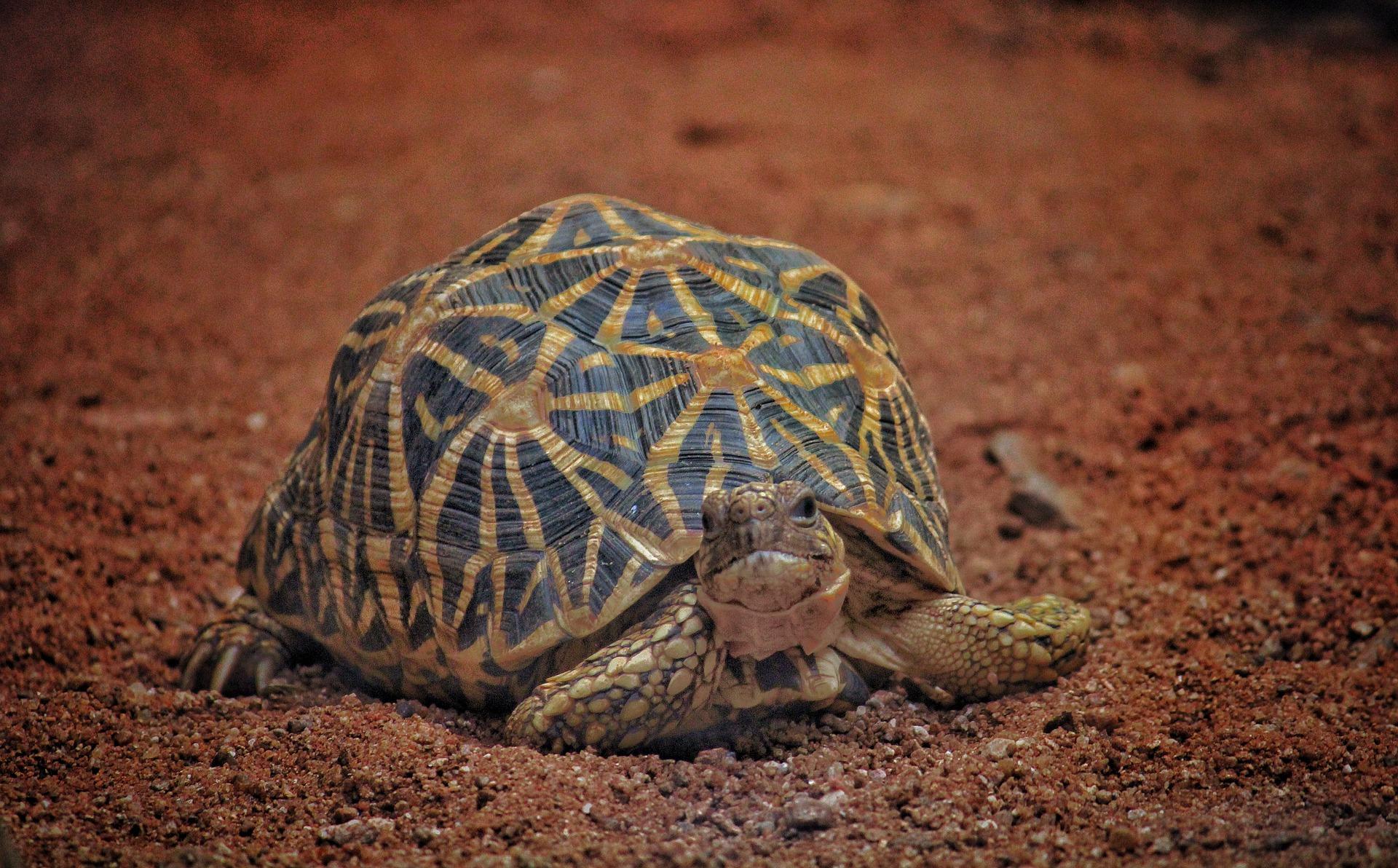In August 2021, 2,247 endangered Indian star tortoises were seized at Chennai airport while being smuggled to Thailand. The case was one of the many cases reported from Tamil Nadu airports, especially smaller airports, with most animals smuggled in cruel conditions. The exotic animals were found to be stuffed inside plastic bottles and tiny crates to serve the demand of pet trade. According to WWF, wildlife trade is the second-biggest direct threat to species after habitat destruction. Unfortunately, the trade is global and cruel throughout.
The In India, exotic animals are both exported from and imported into the country. On March 16, 2021, routine checks made at the Ghiladhari checkpoint in Golaghat district of Assam led to the discovery of macaws, silvery marmosets and golden-headed tamarin, usually found in the Amazon rainforest in Brazil. In another incident, on February 19, 2021, Assam Rifles and Customs rescued 80 exotic animals, including rare species like leopard tortoise, red-footed tortoise, yellow, orange and green iguana, bearded dragon and albino iguana near India-Myanmar border in Mizoram’s Champai district.
World Wildlife Day 2022
The fate of many endangered and rare animal species has become complicated due to man-animal conflicts, lack of funds, global warming, risks of zoonotic disease outbreak, which is being taken more seriously after the COVID-19 pandemic. This illegal trade can also lead to a change in the faunal pattern as the animals can be invasive species, says Saket Badola, Country Head, TRAFFIC India in an interview.
The fate of animal and plant species and the ecosystems that depend on them is at the heart of this year’s UN World Wildlife Day, celebrated on March 3 every year.
This year’s theme, Recovering key species for ecosystem restoration, identifies individual species like the Saiga antelope and California condors, and recognises the role of the groups of species such as corals and seaweed as the glue that holds their ecosystems together. The well-being of these species is important to conserve the biodiversity the planet is left with and restore what we can, and is part of the objective of the UN Decade on Ecosystem Restoration, which was kicked off last year and runs until 2030.
“In 2022, we must finally dispel the false dichotomy that there is a ‘zero-sum game’ of wildlife versus the economy; or protecting ecosystems versus the economy,” says UNDP Administrator, Achim Steiner.
India and Illegal Wildlife Trade
A serious transnational crime, illegal wildlife trade runs in billions of dollars. Curbing this trade requires harmonised effort of many enforcement agencies, such as State Forest Departments, Wildlife Crime Control Bureau and other allied enforcement agencies, which work on-ground to counter wildlife crime in India.
According to the report, Media-Reported Wildlife Poaching and Illegal Trade in India 2020, an assessment of data collected through publicly available online open-source newspaper articles, 522 unique instances of poaching and illegal trade were collated using exhaustive keyword searches through Google and GDELT (Global Database of Events, Languages and Tone) between January 1, 2020, and December 31, 2020.
The maximum number of reported incidents belonged to the group ‘ungulates’ (89 incidents) that comprise species of deer, antelope, boar and wild sheep, followed by big cats like tigers and leopards (82 incidents). The report recorded several instances of big cat poaching with retaliation as the primary motive, with removing body parts as secondary. Snaring was also found to be a concern.
Other major species reported in wildlife crimes were pangolins (72 incidents) in the form of live animals and scales; tortoises and freshwater turtles (61 incidents) for consumption, trade of body parts and as pets; elephants (57 incidents) for ivory, meat and other body parts; and red sandalwood (52 incidents) for timber.
Data was also collected on other reptiles, birds, marine wildlife and rhinos and a few non-native species. Notable lesser-known species recorded in seizure incidents include monitor lizard, sand boa and various other species of snakes, parrots and bears.
The number of documented incidents highlighted that despite Covid-19 pandemic, the business prospered , with local, inexperienced sellers finding global reach through popular social media like YouTube. A relief from this has been the consistent efforts of forest officials not only fighting against poachers physically in forests, but also trapping them digitally. It also underlined the importance of addressing wildlife-related crimes at local level.
Maharashtra’s 10 Year Wildlife Action Plan
A noteworthy wildlife programme at state level is Maharashtra’s Wildlife Action Plan. Launched on October 12, 2021, the programme, during 2021-2030, will study the effect of climate change on wildlife and other ecosystems within the state to tackle it. It is said to be a guiding document for wildlife conservation that was presented to the state’s Wildlife Board by Chief Minister Uddhav Thackeray.
The action plan focuses on 12 areas, including conservation of the species, control of poaching and illegal wildlife trade, wildlife health management, management of tourism in wildlife areas, conservation awareness and outreach, ensuring sustained funding for wildlife sector and conservation of inland aquatic system.
Last month, Maharashtra also took note of the series of tiger and leopard deaths due to electrocution, and asked the chief conservators of forests (CCFs) and field directors of state’s tiger reserves to draw an action plan for 11kV lines and illegal power fences around farms, and a working model to tackle electrocution.
Another interesting case study from the state is on the front of human-wildlife conflicts, where leopard attacks on the boundary of Sanjay Gandhi National Park in Mumbai led to the project, Mumbaikers for Sanjay Gandhi National Park. The project mobilised various stakeholder groups, including local citizens, who wished to better understand the reasons for the attacks, conduct activities to reduce their occurrence and request assistance from local authorities, and journalists, who created an opportunity to change the narrative and perception, from a focus on the attacks themselves to what the correct response should be, records SDG Knowledge Hub.


























